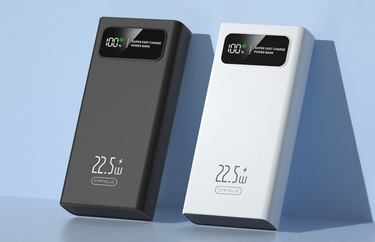Power Banker
How to Choose the Best Power Bank Charger for Your Needs
🔌 Quick Guide: Choose in 30 Seconds
Commuting daily? Go with a 10000mAh power bank—lightweight and fits in your pocket.
Frequent traveler? A 20000mAh power bank with fast charging is your best bet.
Long trips or outdoor use? Consider a 50000mAh power bank (if you don't mind the weight).
Prefer wireless? Try a wireless magnetic power bank—but check if your phone supports MagSafe or Qi.
Flying soon? Make sure your power bank is within airline limits: under 100Wh (~27000mAh).
❓ Q: What do mAh and Wh actually mean? What's the difference?
mAh (milliamp-hours) tells you how much charge the battery stores. Wh (watt-hours) reflects total energy output.
Example:
A 10000mAh power bank = about 37Wh
A 50000mAh power bank = about 185Wh
Higher Wh means more power, but airlines restrict anything over 100Wh from being carried on board.
❓ Q: How many times can a power bank charge my phone, tablet, or laptop?
Here's a general guide (without considering energy loss):
| Power Bank | Approx. Charges for iPhone 15 (3274mAh) | MacBook Pro 13" |
|---|---|---|
| 10000mAh | ~3 full charges | ❌ Too low |
| 20000mAh | ~6 full charges | ~1 full charge |
| 50000mAh | ~15 full charges | ~2.5 charges |
(Assumes 100% efficiency; real-world use will be slightly less.)
❓ Q: So, which one should I buy?
For everyday use: A compact 10000mAh power bank charger is enough to charge your phone 2–3 times.
For travel or remote work: Choose a 20000mAh model that supports PD (Power Delivery) fast charging.
For outdoor, camping, or emergencies: A 50000mAh power bank is great—but bulky.
❓ Q: What about power bank efficiency, lifespan, and care tips?
Self-discharge: Most power banks lose 1–2% charge daily if not used.
Charging efficiency: Real-world efficiency is usually 70–85% due to heat and conversion losses.
Lifespan: On average, power banks last 300–500 charge cycles.
Tips: Avoid extreme heat, don't fully drain too often, and recharge every 2–3 months if unused.
🛫 Q: Can I bring a power bank on a plane?
Yes—but it depends on the capacity.
Most airlines allow up to 100Wh, roughly 27000mAh.
Anything over 100Wh usually needs airline approval.
For safety, airlines often allow only 1 or 2 power banks per person.
Examples in Europe:
Ryanair: Only one power bank under 27000mAh allowed.
Lufthansa, British Airways, Air France, Iberia, Alitalia: Follow EU's 100Wh rule, but may check at the gate.
❓ Q: Why are power banks restricted on flights?
Because lithium-ion batteries can overheat or catch fire if damaged, especially in high-capacity models. That's why airlines limit them and require you to carry them in carry-on luggage, never checked baggage.
🌍 Q: What's the best size power bank for travel?
Depends on your trip length:
1–2 days: 10000mAh
3–5 days: 20000mAh, especially if charging multiple devices
1 week or camping: 50000mAh power bank, or a solar-compatible version
Look for one with multiple ports, fast charging, and airline compliance.
🧲 Q: Are magnetic power banks worth it? Do they work with all phones?
Magnetic power banks, especially wireless magnetic power banks, are great for convenience—no cables needed.
Pros:
Sleek, portable, ideal for iPhones with MagSafe
Good for short top-ups on the go
Cons:
Limited to iPhones with MagSafe; many Android phones aren't compatible
Hard to use phone while it's charging
Slower charging speeds compared to wired options
❓ Q: Magnetic vs. traditional power banks—who wins?
If you value hands-free convenience and own a compatible device, go for a magnetic power bank.
For speed, compatibility, and flexibility, stick with a traditional wired charger—especially when traveling.


 4.4 av 5 basert på 7,646 anmeldelser
4.4 av 5 basert på 7,646 anmeldelser